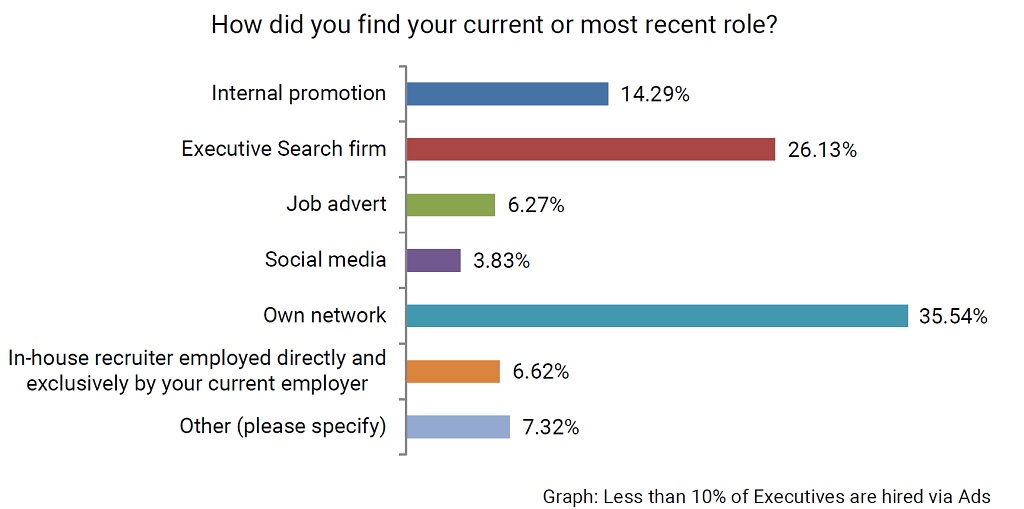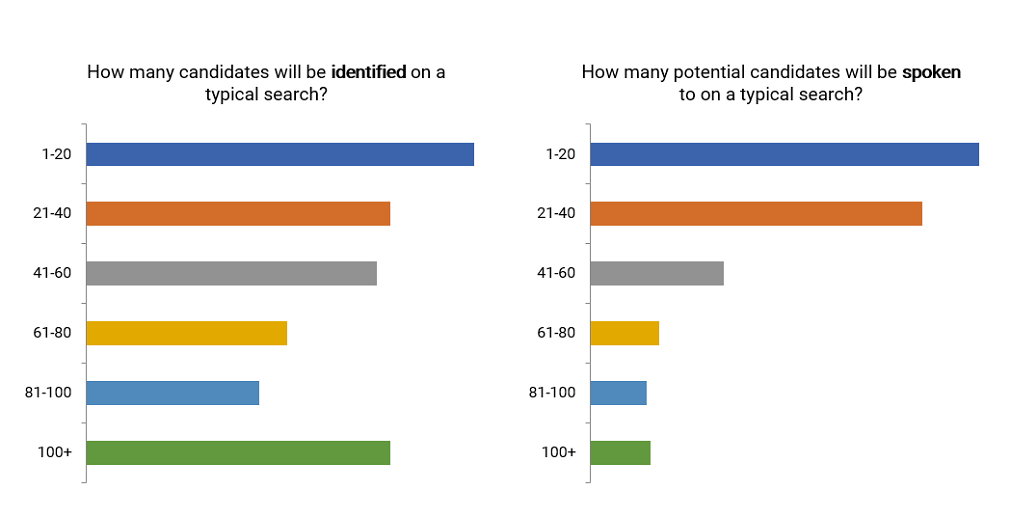The job tenure of a Chief Executive Officer is falling. While extreme examples – such as John Flannery at General Electric Co who stayed in the corner office for just 14 months – are not yet the norm, one in eight CEOs leaves the office within three years of being appointed. Becoming Chief Executive can be a lifetime achievement – Flannery had to wait 20 years for his time in the spotlight at GE – but such leadership opportunities come around rarely. What steps should be taken by the executive wishing to get on the radar of top headhunters?
How do you get your first CEO job?
The first thing to note is that it’s a lot easier to be offered a chief executive job when you already have one! There are numerous reasons for this – both practical (a leadership recruiter searching specifically for a CEO on LinkedIn will not find you if you are not a CEO… or will they?) to questions of risk – an experienced CEO may be considered to be a lower risk hire than an executive with experience at a high level, but not the highest level – however strong his or her track record!
The second point to make is that most first-time CEOs are promoted from within. According to Spencer Stuart, 90% of first time CEOs appointed by S&P 500 companies in a recent quarter were internal appointments. As a result, it is apparent that your best chance of making the step up is through an internal promotion at your current organization.
So, why are most CEOs promoted from within and what can we learn from this? Well, the board is tasked with succession planning. It would be reasonable to assume that board members at your current firm know your leadership strengths and weaknesses – and those of the wider executive team – better than anyone else does. They know about your achievements. They see your KPIs. You may have reported to them. None of this information is available to third party search firms or the organizations they serve. They don’t know what you are capable of.
The problem, of course, is that your current organization only has one corner office (well, technically it probably has four, but I’m sure you get my point). For the leader wishing to take a general manager type role, limiting herself to targeting a single position in a single company is unwise. It makes sense to be open to opportunities from further afield and, more to the point, to be proactive about getting on the radar of the executive recruiters aiming to fill them.
However, it won’t happen automatically.
How do you get on the radar of executive recruiters looking to fill CEO roles?
So, assuming you are yet to make it to the chief executive role, what can you do to increase your chances? At these halcyon levels, recruiting firms typically operate on behalf of the hiring organization and work on an exclusive, retained basis. You need to understand that CEO opportunities are rarely listed on job boards. The executive recruiters responsible for identifying potential candidates for these roles are often referred to as headhunters for a reason – the will come looking. As a result, you’ll only have a shot at the opportunity if the recruiter knows you – or finds you through the research process.

If you have CEO / Managing Director or General Manager on your resume already, you are likely to be on recruiter radars. Without this, being considered as a viable candidate will be more challenging. You need to ensure that not only do you have the appropriate experience but also that recruiters whom you may never have met realize this; Working closely with one or two recruiters is great, but is of no use if they don’t win the retainer, hence the need to be visible to multiple recruiting firms.
Visibility with executive search firms
Logically, if Chief Executive roles are not advertised, then it can be a challenge for an executive to hear about them – and even harder to work out which recruiter has been given the retainer to complete the search. Many executives base a career strategy on building relationships with a handful of “top executive search firms” and, while this is worth doing as part of a broader strategy, the reality is that it will only work if one of the recruiters that you have connected with is the one responsible for filling the role that most suits you.
In short, you can’t typically apply for a CEO position. You can’t approach the headhunter responsible for the search if you don’t know who it is. As a result, you need to get the recruiter to come to you.
Getting spotted by CEO headhunters – offline
Recruiting and headhunting existed long before the Internet. McKinsey was one of the first businesses to offer an executive search service, while the first dedicated firms were established in the 1950s (including Boyden and Ward Howell, both clients of ours today!). Back then, the research process was very different. Executives wishing to be spotted by headhunters were advised to speak at events, write for the press and network, network, network. Sixty years later in the internet age…. every part of this advice still holds good. Talent search firms regularly ask sources to provide leadership recommendations – the wider your network and the more people in your sector know of your talent, the more likely your name is to be offered to an enquiring headhunter.
Getting spotted by CEO headhunters – online
Of course, however high profile your networking makes you, the sheer scale of online tools means that they need to be at the core of your strategy.
Step one has to be your LinkedIn profile. LinkedIn profile optimization will help you stand out on the platform and can quickly increase your visibility to relevant recruiters.
However, in reality, LinkedIn is better for certain types of searches than others. If a recruiter is seeking to identify a senior executive at a specific company, it’s fantastic. If a recruiter is looking to find people based on industry and job-titles, it’s an equally valuable tool.
Headhunters don’t just search based on job titles!
Of course, recruiters typically have far more subtle requirements. The CEO job specification might call for “A current or potential CEO with P&L leadership experience, who has worked in a financial services business, is based in the USA, has exposure to China and has experience in private-equity backed businesses. He or she needs to have experience in a fast-growing, highly competitive environment” The LinkedIn profile doesn’t make it easy for leaders to share this level of detail in a structured manner and the LinkedIn search functionality doesn’t make it easy for recruiters to spot those who do.
This is where tools like GatedTalent excel.
Take P&L responsibility, for example. Fundamental to the role of being the Chief Executive Officer is delivering a bottom-line result. Looking at our internal GatedTalent metrics, we can see that one of the most frequently searched for criteria is P&L experience. As a result, if you hope to get on the radar of CEO search firms, letting them know about any P&L responsibility is a must. How do you do this?
Creating a GatedTalent profile will allow you to share – privately – very detailed information on what you’ve done, your successes, and your aspirations. It allows recruiters to undertake a far more detailed, targeted search than is available on LinkedIn.
It is the job of the executive recruiter to find you
Executive search firms are typically paid in the region of 33% of total executive compensation to place a new leader into c-suite positions. Generally speaking, these fees are not contingent on success.
The reason for this? The recruiter is expected to take the time to go out and identify the best candidate for the role. It’s not just about “the little black book”. According to our research, more than 60% of executives who are identified on a CEO search are found as a result of fresh research. To put this another way – if you are the best candidate for the role, it is the job of the search firm to find you.
This is why visibility to get on the recruiter’s radar is important. If you take appropriate steps to increase your visibility, there is every chance that they will succeed.

The first-time CEO – What happens when you land the job?
The job of CEO is very different from anything an executive may have experienced previously in her career. You’ll face a host of new challenges as a first-time chief executive and you’ll need to learn quickly. Top executive search firm Korn Ferry has undertaken extensive research on this. The biggest challenge you’ll faced by new CEOs?
“But the toughest new skill, leadership experts say, may be developing a relationship with the board of directors. Before they became CEOs, most senior executives will have given presentations to directors. But they never worked with them as a team, Cashman says. It isn’t easy, since the people on the board are usually strong, independent leaders themselves. “You have to appreciate the nuances of each of them, help them coalesce around core issues; be responsive and sensitive to their issues, and help create an environment that’s inclusive and leads to good outcomes,” Young says. The board will challenge a CEO, and the CEO cannot be defensive about it.”
Conclusion: The search for a CEO job takes time
From the perspective of the hiring organization, the average CEO search takes around 90 days. However, from the perspective of the executive searching for a first chief executive role, the search can take considerably longer. It may take days, weeks or months before an opportunity arises that is a good fit, and then the executive has to be successful through a lengthy process – competing with top-class talent.
As a result, my final advice for an executive looking to move up to the corner office is this: be proactive. Take steps to increase your visibility before you “need” to move, to ensure that you are ready when the time comes. It’s better to hear about exciting opportunities and decide not to take advantage of them – than to miss out and not have the option at all!
If you’d like to learn more about some of the topics discussed in this blog, feel free to join me for our complimentary – live – webinar on executive careers. Register here for an upcoming session and be sure to follow us on LinkedIn or Twitter to ensure you don’t miss anything. For those interested, we also offer professional executive resume writing services.











